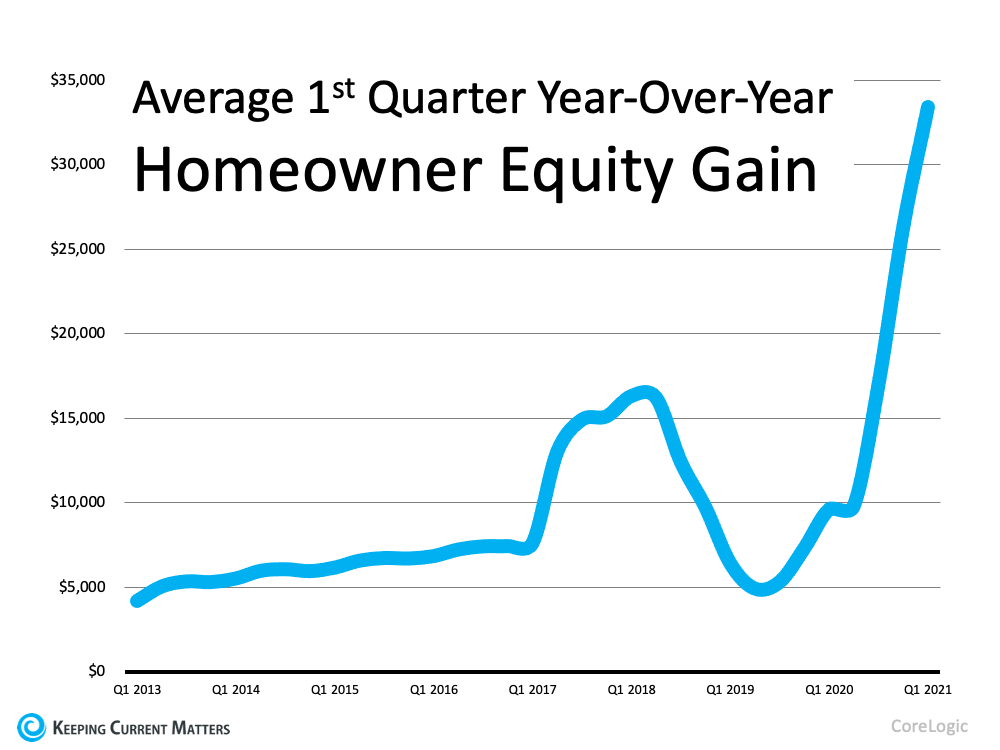What does it mean to build a home at $800K+? How do those homes look? Are those custom built homes or nah? Join me as a I take sir down with Taylor Robinson to discuss luxury homebuying in Dallas with a production builder.
How’s the Market?

When asked about the market as a REALTOR®️, I’m honest on what it is whether it is a potential seller or buyer asking.
As of today, our #DFW market is still pretty strong. Inventory is ⬆️, which gives buyers more options. However, as a seller, you’ll think the market is crap. As a buyer, you’ll think the same too. Understanding where the local market is and where you can get the best bang for your buck, helps you weather it.
Solutions for both:
Sellers – Today’s market IS NOT the market from the spring. You have to put your home in the best light to get it sold if you want top dollar. No longer will just listing it and waiting for the crowd to appear work. Determine if you want top dollar. If you do, you’ll have to do things to get top dollar in today’s market. That includes pricing it right off the bat, great curb appeal, staging, professional photos, and keeping the home clean and organized. I highly recommend staging for today’s market.
Buyers – Be realistic and understand your local market. I know you’re hearing “rates this and rates that”. What really matters is what you can realistically afford. Rent is at 100% interest that isn’t written off during tax season. This IS NOT 2008 at all. Buy a home you can afford and that fits your lifestyle for the timeframe you want it to be. Understand what you want and what you can afford may be two different things. Find where the two areas collide or adjust based on where you want to be.
Bottom Line: Yes, people are still buying and selling. People will continue to buy and sell because LIFE happens through all the ebbs and flows whether good or bad. The key is to understand what is happening in your local market with a trusted expert.
Save this post for future reference. If you’re ready to chat about homeownership in #DFW, book a consultation with me at calendly.com/newaverealty.
Should You Renovate or Move?
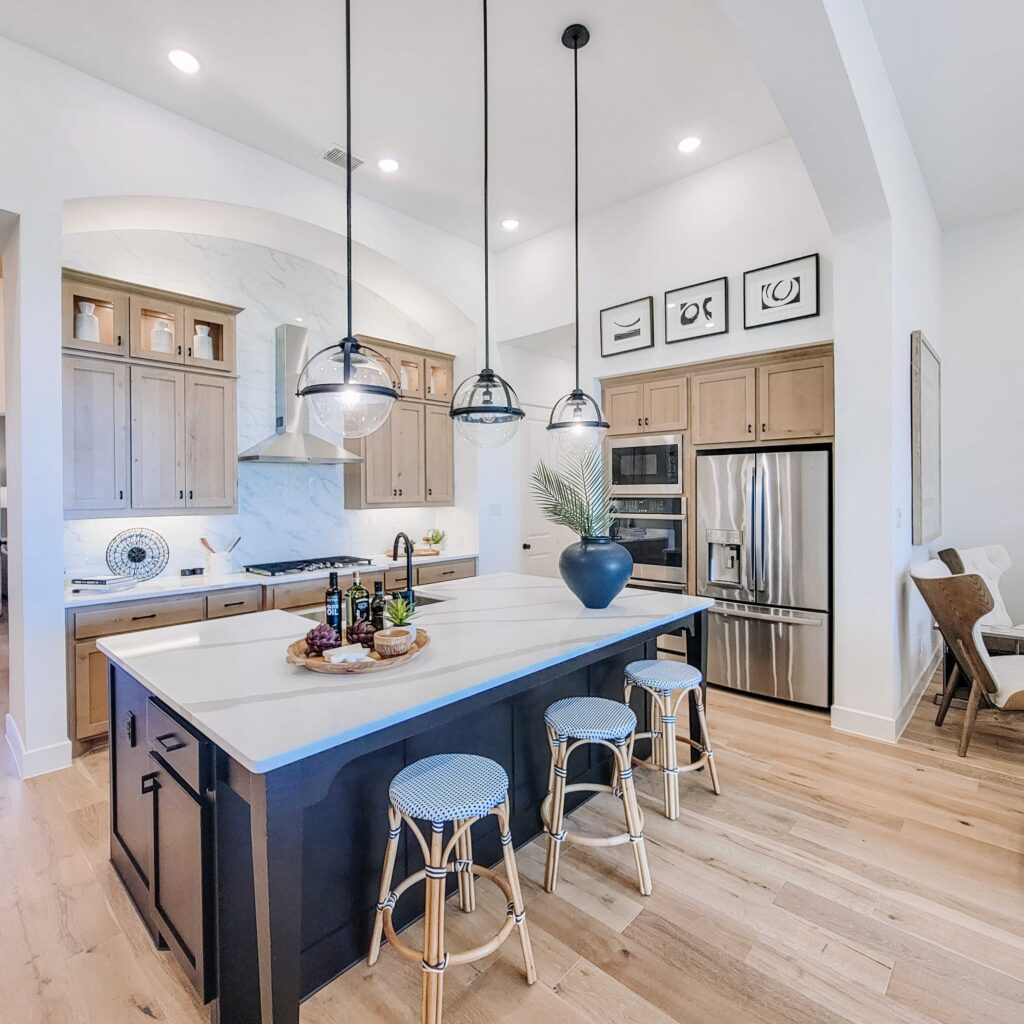
The last 18 months changed what many buyers are looking for in a home. Recently, the American Institute of Architects released their AIA Home Design Trends Survey results for Q3 2021. The survey reveals the following:
- 70% of respondents want more outdoor living space
- 69% of respondents want a home office (48% wanted multiple offices)
- 46% of respondents want a multi-function room/flexible space
- 42% of respondents want an au pair/in-law suite
- 39% of respondents want an exercise room/yoga space
If you’re a homeowner who wants to add any of the above, you have two options: renovate your current house or buy a home that already has the spaces you desire. The decision you make could be determined by factors like:
- A possible desire to relocate
- The difference in the cost of a renovation versus a purchase
- Finding an existing home or designing a new home that has exactly what you want (versus trying to restructure the layout of your current house)
In either case, you’ll need access to capital: the funds for the renovation or the down payment your next home would require. The great news is that the money you need probably already exists in your current home in the form of equity.
Home Equity Is Skyrocketing
The record-setting increases in home prices over the last two years dramatically improved homeowners’ equity. The graph below uses data from CoreLogic to show the average home equity gain in the first quarter of the last nine years:Odeta Kushi, Deputy Chief Economist at First American, quantifies the amount of equity homeowners gained recently:
“Remember U.S. households own nearly $35 trillion in owner-occupied real estate, just over $11 trillion in debt, and the remaining ~$24 trillion in equity. In inflation adjusted terms, homeowners in Q2 had an average of $280,000 in equity- a historic high.”
As a homeowner, the money you need to purchase the perfect home or renovate your current house may be right at your fingertips. However, waiting to make your decision may increase the cost of tapping that equity.
If you decide to renovate, you’ll need to refinance (or take out an equity loan) to access the equity. If you decide to move instead and use your equity as a down payment, you’ll still need to mortgage the remaining difference between the down payment and the cost of your next home.
Mortgage rates are forecast to increase over the next year. Waiting to leverage your equity will probably mean you’ll pay more to do so. According to the latest data from the Federal Housing Finance Agency (FHFA), almost 57% of current mortgage holders have a mortgage rate of 4% or below. If you’re one of those homeowners, you can keep your mortgage rate under 4% by doing it now. If you’re one of the 43% of homeowners with a mortgage rate over 4%, you may be able to do a cash-out refinance or buy a more expensive home without significantly increasing your monthly payment.
First Step: Determine the Amount of Equity in Your Home
If you’re ready to either redesign your current house or find an existing or newly constructed home that has everything you want, the first thing you need to do is determine how much equity you have in your current home. To do that, you’ll need two things:
- The current mortgage balance on your home
- The current value of your home
You can probably find the mortgage balance on your monthly mortgage statement. To find the current market value of your house, you can pay several hundreds of dollars for an appraisal, or you can contact a local real estate professional who will be able to present to you, at no charge, a professional equity assessment report.
Bottom Line
If the past 18 months have refocused your thoughts on what you want from your house, now may be the time to either renovate or make a move to the perfect home.
Prices are UP & STUCK….for now!

Are the Prices TOO DAMN HIGH OR NAH?
In the beginning of 2020, the Dallas-Fort Worth marker was headed to a neutral market. Buyers were able to find homes and sellers were able to sell. No problem, right?
Then COVID hit in March 2020 and shut the country down. This left real estate to be in the unknown territory. If we are being truthful, the absolute best time to have bought a house would have been March-June 2020. I won’t say people were giving away their houses but the unknown was so unknown, you could have gotten things that you cannot think to ask of now.
As far as homes are now, today’s market is reflective of supply and demand. Due to a lot of sellers not listing within the last year, builders not being able to keep up with the demand, and buyers looking to get out of rentals, we were hit with a high demand and a shortage of homes.
If you go back to your college Economics class OR high school Civics class, when demand is high and supply is low, the prices go UP! That is what has happened to the real estate market. Still confused? Let’s use the Jordan brand of shoes for example. They only release so many each round. Soooo many people want them, once they sell out, they sell out. However, resellers know they are the most wanted shoe. They KNOW they can resell and get a higher price because the availability is limited. Welp, that’s the housing market and supply and demand.
Are the prices higher, yes? However, it is relative to the market that you see. Is it favorable? Maybe not to some but the market reacts to what it has.
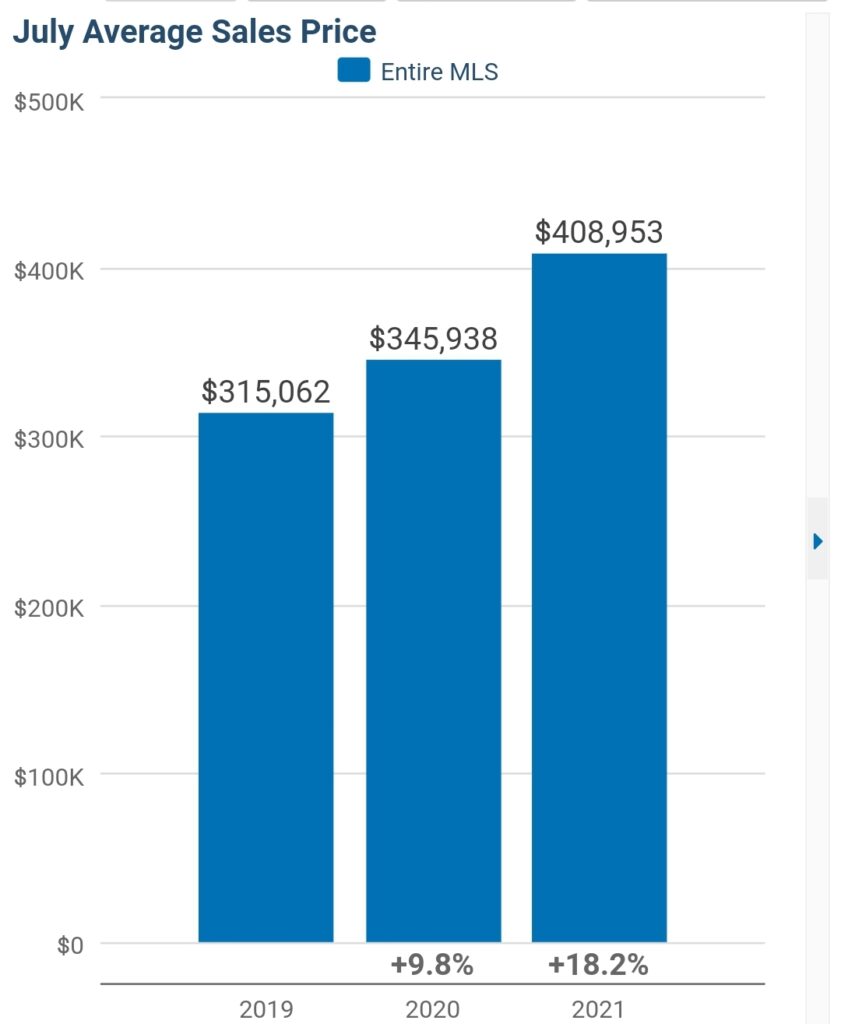
Prior to 2020, the $250K and below market was vanishing from the DFW market. Now, to find homes in that range, you will have to move out in rural areas of the metroplex. The only places that have a little bit of $250K and below left is the Forney-Heartland-Crandall market and the Princeton area market. In 2021, most homes are starting the $350s. In my honest opinion, today’s $300K is yesterday’s $250K with a low interest rate. You can get a higher priced home but that doesn’t mean the higher priced home will be a larger home.
For potential homebuyers, make a list of what you feel is important to have in the first home, determine howlong you plan to live there, and what amenities do you need in and around the neighborhood. Remember, it is the first home. In order to get bells and whistles, you’ll have to pay for it. If that is not an option, reconfigure what you can spend and realistically do for the first home. Build and grow your equity to make the next home your dream home.

Your first home is typically the first step to getting to the dream home.
If you need to discuss more, book a virtual appointment with us at calendly.com/newaverealty.
Will There Be MORE Homes to Buy This Year?

If you’re looking for a home to purchase right now and having trouble finding one, you’re not alone. At a time like this when there are so few houses for sale, it’s normal to wonder if you’ll actually find one to buy. According to the National Association of Realtors (NAR), across the country, inventory of available homes for sale is at an all-time low – the lowest point recorded since NAR began tracking this metric in 1982. There are, however, more homes expected to hit the market later this year. Let’s break down the three key places they’ll likely come from as 2021 continues on.
1. Homeowners Who Didn’t Sell Last Year
In 2020, many sellers decided to pause their moving plans for a number of different reasons. From health concerns about the pandemic to financial uncertainty, plenty of homeowners decided not to move last year.
Now that vaccines are being distributed and there’s a light at the end of the COVID-19 tunnel, it should bring some peace of mind to many potential sellers. As Danielle Hale, Chief Economist at realtor.com, notes:
“Fortunately for would-be homebuyers, we expect sellers to return to the market as we see improvement in the economy and progress against the coronavirus.”
Many of the homeowners who decided not to sell in 2020 will enter the market later this year as they begin to feel more comfortable showing their house in person, understanding their financial situation, and simply having more security in life.
2. More New Homes Will Be Built
Last year was a strong year for home builders, and according to the National Association of Home Builders (NAHB), 2021 is expected to be even better:
“For 2021, NAHB expects ongoing growth for single-family construction. It will be the first year for which total single-family construction will exceed 1 million starts since the Great Recession.”
With more houses being built in many markets around the country, homeowners looking for new houses that meet their changing needs will be able to move into their dream homes. When they sell their current houses, this will create opportunities for those looking to find a home that’s already built to do so. It sets a simple chain reaction in motion for hopeful buyers.
3. Those Impacted Financially by the Economic Crisis
Many experts don’t anticipate a large wave of foreclosures coming to the market, given the forbearance options afforded to current homeowners throughout the pandemic. Some homeowners who have been impacted economically will, however, need to move this year. There are also homeowners who didn’t take advantage of the forbearance option or were already in a foreclosure situation before the pandemic began. In those cases, homeowners may decide to sell their houses instead of going into the foreclosure process, especially given the equity in homes today. Lawrence Yun, Chief Economist at NAR, explains:
“Given the huge price gains recently, I don’t think many homes will have to go to foreclosure…I think homes will just be sold, and there will be cash left over for the seller, even in a distressed situation. So that’s a bit of a silver lining in that we don’t expect a massive sale of distressed properties.”
As we can see, it looks like we’re going to have an increase in the number of homes for sale in 2021. With fears of the pandemic starting to ease, new homes being built, and more listings coming to the market prior to foreclosure, there’s hope if you’re planning to buy this year. And if you’re thinking of selling and making a move, doing so while demand for your house is high might create an outstanding move-up option for you.
Bottom Line
Housing demand is high and supply is low, so if you’re thinking of moving, it’s a great time to do so. There are likely many buyers who are looking for a home just like yours, and there are options coming for you to find a new house too. Contact New Avenue Realty Group today to see how you can benefit from the opportunities available in the Dallas-Fort Worth market.
SOURCE: KEEPING CURRENT MATTERS
3 Ways Low Inventory Is a WIN for Sellers!
The number of houses for sale today is significantly lower than the high buyer activity in the current housing market. According to Lawrence Yun, Chief Economist for the National Association of Realtors (NAR):
“There is no shortage of hopeful, potential buyers, but inventory is historically low.”
When the demand for homes is higher than what’s available for sale, it’s a great time for homeowners to sell their house. Here are three ways low inventory can help you win if you’re ready to make a move this fall.
1. Higher Prices
With so many more buyers in the market than homes available for sale, homebuyers are frequently entering into bidding wars for the houses they want to purchase. This buyer competition drives home prices up. As a seller, this can definitely work to your advantage, potentially netting you more for your house when you close the deal.
2. Greater Return on Your Investment
Rising prices mean homes are also gaining value, which drives an increase in the equity you have in your home. In the latest Homeowner Equity Insights Report, CoreLogic explains:
“In the second quarter of 2020, the average homeowner gained approximately $9,800 in equity.”
This year-over-year growth in equity gives you the ability to put that money toward a down payment on your next home or to keep it as extra savings.
3. Better Terms
When we’re in a sellers’ market like we are today, you’re in the driver’s seat if you sell your house. You have the power to sell on your terms, and buyers are more likely to work with you if it means they can finally move into their dream home.
So, is low housing inventory a big deal?
Yes, especially if you want to sell your house at the perfect time. Today’s market gives sellers immense negotiating power. However, it won’t last forever, especially as more sellers return to the housing market next year. If you’re considering selling your house, the best time to do so is now.
Bottom Line
If you’re interested in taking advantage of the current sellers’ market, contact a local real estate professional today to determine your best move.
Source: Keeping Current Matters
Buyers: Take Advantage of the Affordability of Today’s Market!

Everyone is ready to buy a home at different times in their lives, and despite the health crisis, today is no exception. Understanding how affordability works and the main market factors that impact it may help those who are ready to buy a home narrow down their optimal window of time to make a purchase.
There are three main factors that go into determining how affordable homes are for buyers:
- Mortgage Rates
- Mortgage Payments as a Percentage of Income
- Home Prices
The National Association of Realtors (NAR), produces a Housing Affordability Index, which takes these three factors into account and determines an overall affordability score for housing. According to NAR, the index:
“…measures whether or not a typical family earns enough income to qualify for a mortgage loan on a typical home at the national and regional levels based on the most recent price and income data.”
Their methodology states:
“To interpret the indices, a value of 100 means that a family with the median income has exactly enough income to qualify for a mortgage on a median-priced home. An index above 100 signifies that family earning the median income has more than enough income to qualify for a mortgage loan on a median-priced home, assuming a 20 percent down payment.”
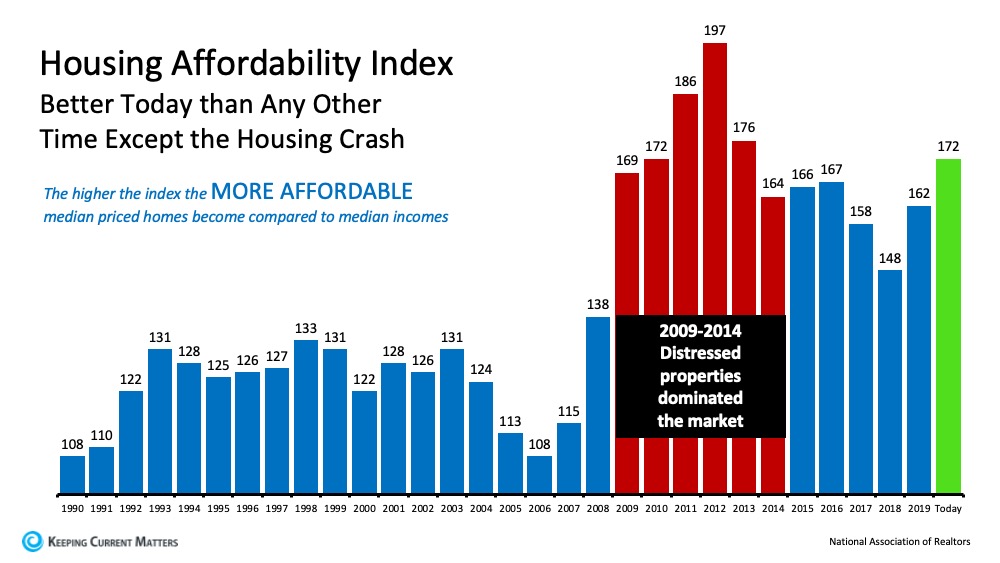
So, the higher the index, the more affordable it is to purchase a home. Here’s a graph of the index going back to 1990:The green bar represents today’s affordability. We can see that homes are more affordable now than they have been at any point since the housing crash when distressed properties (foreclosures and short sales) dominated the market. Those properties were sold at large discounts not seen before in the housing market.
Why are homes so affordable today?
Although there are three factors that drive the overall equation, the one that’s playing the largest part in today’s homebuying affordability is historically low mortgage rates. Based on this primary factor, we can see that it is more affordable to buy a home today than at any time in the last seven years.
If you’re considering purchasing your first home or moving up to the one you’ve always hoped for, it’s important to understand how affordability plays into the overall cost of your home. With that in mind, buying while mortgage rates are as low as they are now may save you quite a bit of money over the life of your home loan.
Bottom Line
If you feel ready to buy, purchasing a home this season may save you significantly over time based on historic affordability trends. Reach out to New Avenue Realty Group today to determine if now is the right time for you to make your move.
Let’s Talk DFW Real Estate!


The time is here and you want to buy a home. There are so many people who are excited from moving from renter to homeowner throughout every year. However, with the Dallas-Fort Worth metroplex growing each and everyday, how do you decide on where to live?
For some people, the close proximity to work is important. For others, the close proximity to things outside of work is more important. I’ve actually had clients that had to live near Target. As a Target fanatic myself, I couldn’t blame them. After searching any and everywhere, they gave up the dream to buy a home near a Target. However, guess what? We found them a home in their price range ACROSS from a Target. LOOK AT GOD!
Now let’s talk a little more in depth on where to go. Many times we love where we rent or we hate it. Do you know the cost of homes where you live? Here is the chance to see where you can buy. One rule of thumb I tend to tell people is that you can either afford 2 times your monthly salary or four times your monthly salary. Why so? Well, when you purchase a home, a lender qualifies you based on your debt to income ratio.
Debt to Income Ratio
A debt-to-income, or DTI, ratio is derived by dividing your monthlydebt payments by your monthly gross income. The ratio is expressed as a percentage, and lenders use it to determine how well you manage monthly debts — and if you can afford to repay a loan.
Here’s a simple two-step formula for calculating your DTI ratio.
- Add up all of your monthly debts. These payments may include:
- Monthly mortgage or rent payment
- Minimum credit card payments
- Auto, student or personal loan payments
- Monthly alimony or child support payments
- Any other debt payments that show on your credit report
- Divide the sum of your monthly debts by your monthly gross income (your take-home pay before taxes and other monthly deductions).
- Convert the figure into a percentage and that is your DTI ratio.
Keep in mind that other monthly bills and financial obligations — utilities, groceries, insurance premiums, healthcare expenses, daycare, etc. — are not part of this calculation. Your lender isn’t going to factor these budget items into their decision on how much money to lend you. Keep in mind that just because you qualify for a $300,000 mortgage, that doesn’t mean you can actually afford the monthly payment that comes with it when considering your entire budget. – Excerpted from Bankrate.com
Your debt to income ratio (DTI) will determine which loan program makes sense for you as well. If you have a higher DTI, you may work best with a FHA loan as they have higher DTI qualifications up to 56.9%. If you are at 50% or below, you may qualify to do a conventional loan. If your DTI, exceeds any of these numbers, you may be asked to pay off some things to get where you need to be to get qualified.
Mortgages are NOT like rental qualifications. Rental qualifications are based on your monthly gross income being 3 times the monthly rent. A mortgage lender looks at ALL of your debt reported on your credit report. Let’s use an example for DTI qualifications.
EXAMPLE:
Gross Income – $48,000 salary = $4000 per month
Debt: Car Note – $350; Student Loans – $200, Credit Card 1 – $55; Credit Card 2 – $75; Personal Loan – $100. These are all based on monhtly payments NOT the overall payment. The total debt in this situation is $780/month. Now let’s say that the mortgage payment on said home would be $1800. That would bring your total monthly debt up to $2580. Would the lender qualify you for that home? Well, let’s see. Divide $2580/4000. That equals 65% of debt to income. Now, the lender may not qualify you for a home that would cost $1800/month. However, you may can get qualified for a home that cost $1450/month. Want to spend a little more? Your next option would be to eliminate some of the debt. In this example, to get the home that cost $1800, you’d need to eliminate $350 of debt. Where would that be from?
I tell clients that the way they could afford more house would be to either eliminate some debt, increase income, put down more money on the home, or all of the above.
Cost of Homes in DFW
As you can see, the average price of homes in DFW have increased 2.9% from May 2018 to May 2019 to $330,766. This isn’t to say that all homes in DFW are $330,766 but on average the home sales are.
How do you find which areas fit more of your budget? Consider the average sales prices of area. Let’s break it down within counties.
Some of the top places that my clients are moving to are the following: Aubrey, Forney/Heartland, Celina, and McKinney. Check out the prices of those areas below:
Buyer’s Market or Seller’s Market
The month’s of inventory determine whether we are in a buyer’s market or a seller’s market. If there is 6 months of more of inventory, we are in a buyer’s market. That means there is a home out there for at least two buyers. Homes aren’t scarce and the options are there. If we have less than 6 months of inventory, we are in a seller’s market. That means inventory is tight and you are more than likely to see multiple offers.
If we go back and compare those cities that we just looked at (Aubrey, Celina, McKinney, and Forney), you will see what type of market these areas are in. Each city will have different stats which is why it is best to get very specific on 3-4 areas.
If we look at DFW as a whole, you will see that the overall metroplex is still in a seller’s market with 3.4 months of inventory which is up 17.2% from May 2018.
This is just the basics of a buyer’s consultation with New Avenue Realty Group. We help clients get from curiosity to possibility. Let’s get you into your new avenue in the metroplex. Book an appointment with me at atfowlerrealtor.appointy.com.
7 Easy Ways to Increase Your Curb Appeal
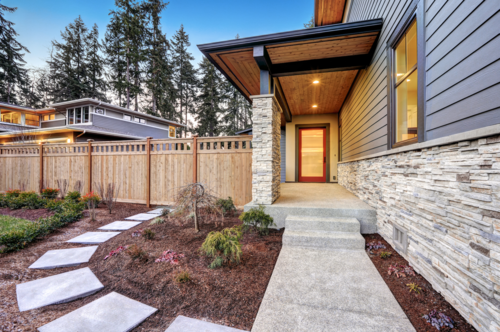
If you’re preparing to sell your home, curb appeal should be a priority. When someone is walking by or coming to your open house, the outside of your home is the first thing they will see. If there is no curb appeal, potential buyers may never even set foot in your home. Instead of ignoring your home’s outdoor appearance, consider making some budget-friendly changes that can add appeal to your home without breaking the bank.
1. Landscape Your Walkway
Create a smooth transition from the street to your front door. A clear path will allow a potential buyer’s eye to look straight to your home, rather than stopping to concentrate on unkept landscaping. Clean your walkway and create groupings of mid-size shrubby and florals close to the road and by your front door.
2. Hang a Wreath
Adding a wreath to your front door is a simple way to make your home look more welcoming. Consider a DIY wreath that is easy to create and cost-friendly.
3. Treat Your Lawn Better
Consistent upkeep is the best way to save money when it comes to your front lawn. You should apply a weed-and-feed treatment to your lawn as often as needed to supply the necessary nutrients while also killing off any weeds. Be sure to provide proper maintenance to your lawn mower and keep your mower blade sharp.
4. Add Porch Appeal
If you have a front porch, add an affordable outdoor furniture set. This can create an inviting space that will make potential buyers want to try it out!
5. Consider Color Accents
If your door or shutters need a fresh paint job, consider finding an accent color that will help your house pop. It doesn’t have to be extreme, just enough to catch the eye of a potential buyer. Be sure to test your paint color alongside your siding or brick before fully committing.
6. Restore Your Driveway
Your driveway can be a major eyesore if it isn’t taken care of. Fill any holes or cracks in your asphalt and apply a fresh sealer. A driveway that looks new is sure to help your curb appeal.
7. Power Wash Your Home
Sometimes, all your home needs is a good cleaning. If you don’t own power washer, rent one from your local home improvement store and take a weekend to power wash your entire exterior. Even if your home is relatively new, a deep cleaning can make it look like a new build.
Protesting Your DFW Property Tax Assessment!


Each year, respective counties send out new tax bills for the year to be paid by December. In Texas, one of the biggest expenses for homeowners are property taxes. We don’t have state income taxes therefore most local entities such as the county, school districts, county hospitals, cities, and sometimes county community colleges are paid through the property taxes.
The 2019 property tax assessments from various counties in the metroplex have been mailed out and guess what? Your property taxes have increased. What most people are seeing are a significant increase in their home value assessment (the property tax assessment value is getting really close to market values which we will talk more about later) by their counties. You have until May 15th to protest your assessment online or in person.
Did you know fewer than 20% of homeowners appeal their property taxes? This means they may pay more than their fair share. The best thing to do is to protest them. Why? You have a chance of lowering the amount you pay in property taxes by simply saying that this is too much. Let’s make a change in 2019 until the state government decides how they want to handle the property tax reform, shall we?
Here are tips to protesting your property tax assessment:
Make sure you have filed your homestead exemption.

You have until April 30th to file your homestead exemption with your county to save money on property taxes. You only have to do this once but if you failed to do it the January – April AFTER you purchased your home, this is your chance to do it. A homestead exemption helps you save money on your property taxes. It also prevents your tax value from increasing more than 10% per year.
Check for mistake’s on the county’s description on your home.
Does the county have your 3 bedrooms, 2 bathrooms, formal dining home at 1805 square foot as 4 bedrooms and 3 bathrooms at 1925 square feet? It happens all the time and no one corrects it. A lot of county information is incorrect but we let it ride as gospel. Check your county’s website to make sure the square footage, number of bedrooms and bathrooms, and lot size are accurate in their assessment.
Gather Your Comps
It is important to keep up with the values of homes in your neighborhood. Most time people don’t realize what other homes are selling for. To gather more accurate comps, connect with a local REALTOR to see what homes have sold for within the last 3 months or 90 days in your neighborhood.
You can enter your address below to determine what your home is worth.
Highlight Flaws in Your Home

We all love our homes and it is the best thing since slice bread. However, this is the time to really compare your home and get very judgmental about it. If you notice most of the homes that have sold nearby all have hardwood or some wood-like material, while you have carpet everywhere, take pictures of it. If you know your home is in need of a new roof or has foundation issues, take pictures and/or provide the quotes of those repairs that are needed.
Consider the negative influences near your nearby such as backing up to a busy street, water tower behind the home, or being on the main road to the neighborhood. Those are items that an appraiser would dock off your home’s market value when it is time for you to sell, use it to your benefit for your property taxes. P.S. I am not saying to trash your home or that you won’t ever be able to sell your home, this is to save money on your property taxes. I sold a home in Fort Worth last year and my clients ended up getting the property for less because the appraiser thought it was in a less desirable location than other homes comparable to it. It’s a gorgeous home and my clients love it. However, they got a win to buy it at a lesser price.
New Construction Woes
In most cases for newly built homes, there is a tricky line for homeowners. The previous year, your home was assessed based on land value. Now, it is based on the value of the home with a home on it. Check the price of the home that they county says your home is. Is it higher than what you paid for the home? Is it higher than what new homeowners can build the same exact home for? If your answer is yes to either one, that’s your protest. Texas is a non-disclosure state. In order to win the battle on the first one, you may have to show what you paid for your new home. The other option is to stop by the builder’s office (if they are still in the neighborhood) or pull it offline and see what your home is being sold for at base price. Is it lower than the county’s assessment? If so, your argument here is that your home has been lived in. No one is going to purchase your home for higher than what they can build their home for. Then take pictures of the things that you got standard (if you built) with the builder and haven’t updated.
Check Local Real Estate Trends
In addition to talking to your REALTOR for comps, ask them to pull the real estate trends. Homes have the potential to increase in value or appreciate. However, a property can decrease in value or depreciate. Is the price of homes sales decreasing in your zip code? A decrease in value can be caused in excess supply, lack of demand, deflation or other reasons that take away the property value. Home values fluctuate so don’t get nervous. It is just something for you to know and use in your protest. Homes appreciate normally 2-4% a year. Find out what is happening in your local area. It can be completely different from Aubrey to Crowley.
It can be that your area isn’t appreciating as much as the county THINKS it is appreciating.
Things to Remember
The county’s assessor’s don’t see the inside of your home. They can only see the outside of it. This is the time to show and prove what your home looks like. Use the knowledge that you have from the tips above to help lower your tax assessment value which in return lowers your property taxes. After you have your evidence, schedule an appointment with the county to present your case OR present the information online. It is important to protest annually to minimize your property taxes.
If you need any assistance in gathering information to present your case, contact me at via email at atfowler@newavenuerealty.com.
